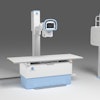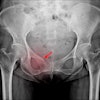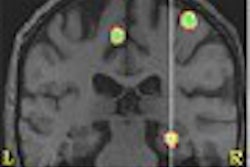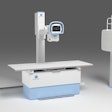Elsevier Science, St. Louis, 2003, $329
For the radiology resident, head and neck imaging can be a daunting and overwhelming aspect of neuroradiology. Complex anatomic relationships, site-specific disease processes, and subtle imaging findings can intimidate even the most accomplished trainee. Referral patterns from ophthalmologists and otolaryngologists may result in infrequent or sporadic case material, depending on practice size and site. For this reason, an all-encompassing reference is a vital asset.
This two-volume title has served as the authoritative text on head and neck radiology for the last decade. The 4th edition is an ambitious attempt to improve an exhaustive and comprehensive work. This expanded edition includes nearly 800 new pages of text, several new chapters, and more contributors. New material emphasizes advances in technology, recent concepts in disease diagnosis and treatment, and epidemiological data. Additionally, over 4,500 high quality images and illustrations have been added.
Material has been re-organized, but bears some resemblance to the previous editions. As outlined in the table of contents, chapters are further subdivided so that each topic is presented in more detail.
The sections in the first volume deal with the sinonasal cavities, orbit, skull base, and temporomandibular joint. The second volume contains sections on the temporal bone, upper aerodigestive tract, and the neck. Several subsections involving disease process and pathology follow an extensive discussion of normal embryology and anatomy. The imaging atlas of normal temporal bone and sinus anatomy has been expanded with a more detailed structural analysis.
A chapter on the genetics of tumor development and metastasis has been added at the end of the second volume. This technical chapter discusses the biochemistry and cell biology dictating tumor growth and spread. Several examples of genetically based diseases, which manifest in the head and neck, are presented. A foundation is laid for the discussion of gene therapy, molecular, and genetic based imaging -- techniques that are sure to become increasingly important clinically.
An expanded chapter dealing with MR spectroscopy, PET, and thallium-201 imaging emphasizes the increasing importance of physiologic imaging in the head and neck. Other timely additions include postoperative evaluation of osteomeatal surgery, ultrasound of nodal and non-nodal neck masses, skin and soft tissue lesions, and imaging of perineural tumor spread.
As in previous incarnations, routine topics are discussed in extensive detail with innumerable references. High quality images are presented alongside the corresponding text, making the material easy to correlate. Rare conditions and esoteric information are also presented in a thorough manner. Unusual disease entities are easy to locate in the index, and in most instances, images of these entities are provided.
In conclusion, Som and Curtin have accomplished the formidable task of updating such a large work. The new sections bring together the most complete and current reference text in this field. Head and Neck Imaging is a comprehensive masterpiece that like a fine wine, gets better with age.
By Dr. Brian FortmanAuntMinnie.com contributing writer
April 17, 2003
Dr. Fortman is a neuroimaging specialist at Carolina Radiology Associates, in Myrtle Beach, SC. He recently completed a neuroradiology fellowship at The Johns Hopkins Hospital in Baltimore.
If you are interested in reviewing books, let us know at [email protected].
The opinions expressed in this review are those of the author, and do not necessarily reflect the views of AuntMinnie.com.
Copyright © 2003 AuntMinnie.com



















